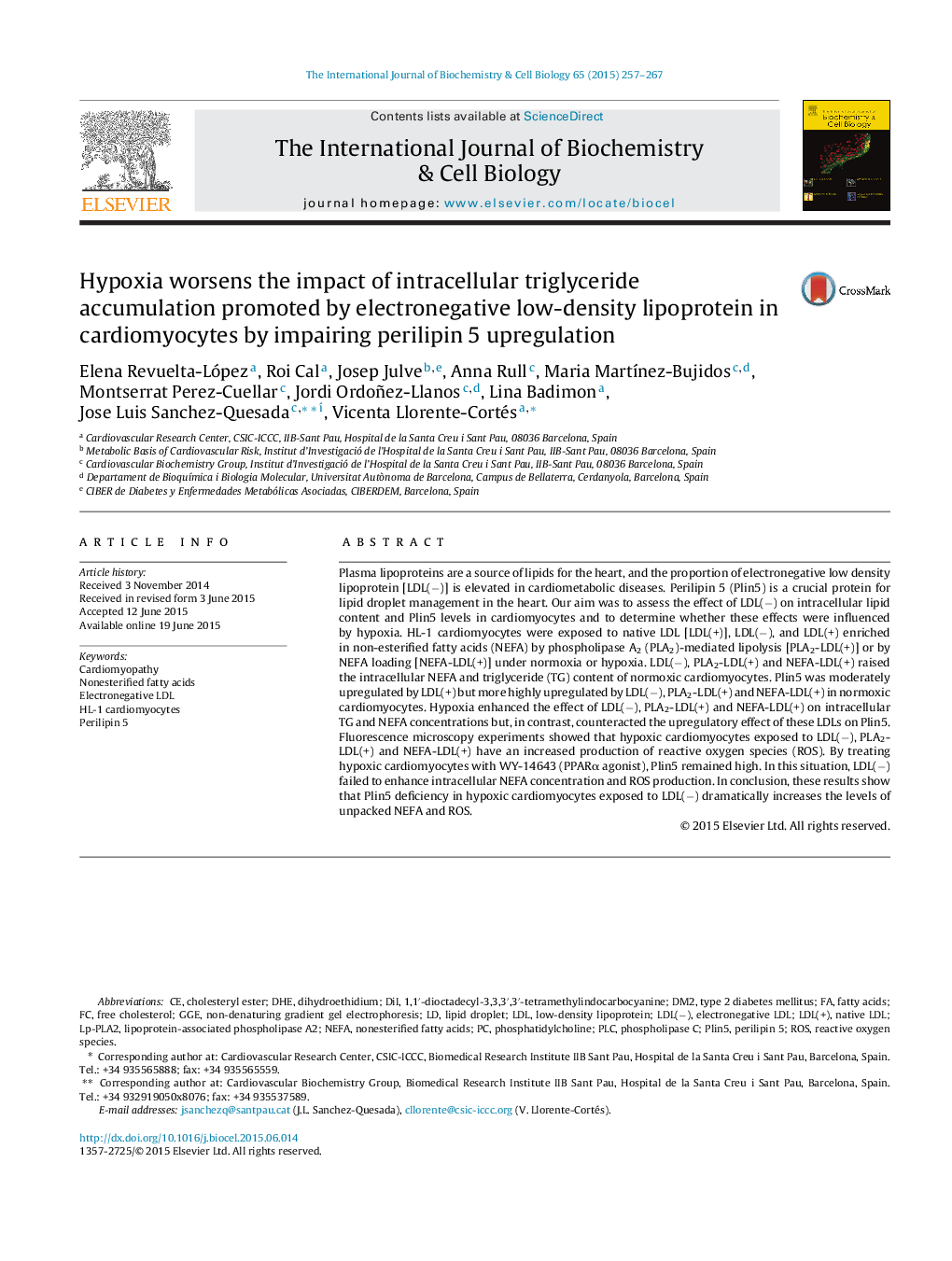| Article ID | Journal | Published Year | Pages | File Type |
|---|---|---|---|---|
| 1983488 | The International Journal of Biochemistry & Cell Biology | 2015 | 11 Pages |
Plasma lipoproteins are a source of lipids for the heart, and the proportion of electronegative low density lipoprotein [LDL(−)] is elevated in cardiometabolic diseases. Perilipin 5 (Plin5) is a crucial protein for lipid droplet management in the heart. Our aim was to assess the effect of LDL(−) on intracellular lipid content and Plin5 levels in cardiomyocytes and to determine whether these effects were influenced by hypoxia. HL-1 cardiomyocytes were exposed to native LDL [LDL(+)], LDL(−), and LDL(+) enriched in non-esterified fatty acids (NEFA) by phospholipase A2 (PLA2)-mediated lipolysis [PLA2-LDL(+)] or by NEFA loading [NEFA-LDL(+)] under normoxia or hypoxia. LDL(−), PLA2-LDL(+) and NEFA-LDL(+) raised the intracellular NEFA and triglyceride (TG) content of normoxic cardiomyocytes. Plin5 was moderately upregulated by LDL(+) but more highly upregulated by LDL(−), PLA2-LDL(+) and NEFA-LDL(+) in normoxic cardiomyocytes. Hypoxia enhanced the effect of LDL(−), PLA2-LDL(+) and NEFA-LDL(+) on intracellular TG and NEFA concentrations but, in contrast, counteracted the upregulatory effect of these LDLs on Plin5. Fluorescence microscopy experiments showed that hypoxic cardiomyocytes exposed to LDL(−), PLA2-LDL(+) and NEFA-LDL(+) have an increased production of reactive oxygen species (ROS). By treating hypoxic cardiomyocytes with WY-14643 (PPARα agonist), Plin5 remained high. In this situation, LDL(−) failed to enhance intracellular NEFA concentration and ROS production. In conclusion, these results show that Plin5 deficiency in hypoxic cardiomyocytes exposed to LDL(−) dramatically increases the levels of unpacked NEFA and ROS.
